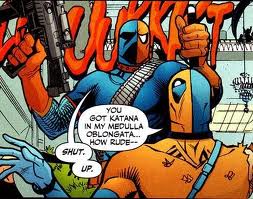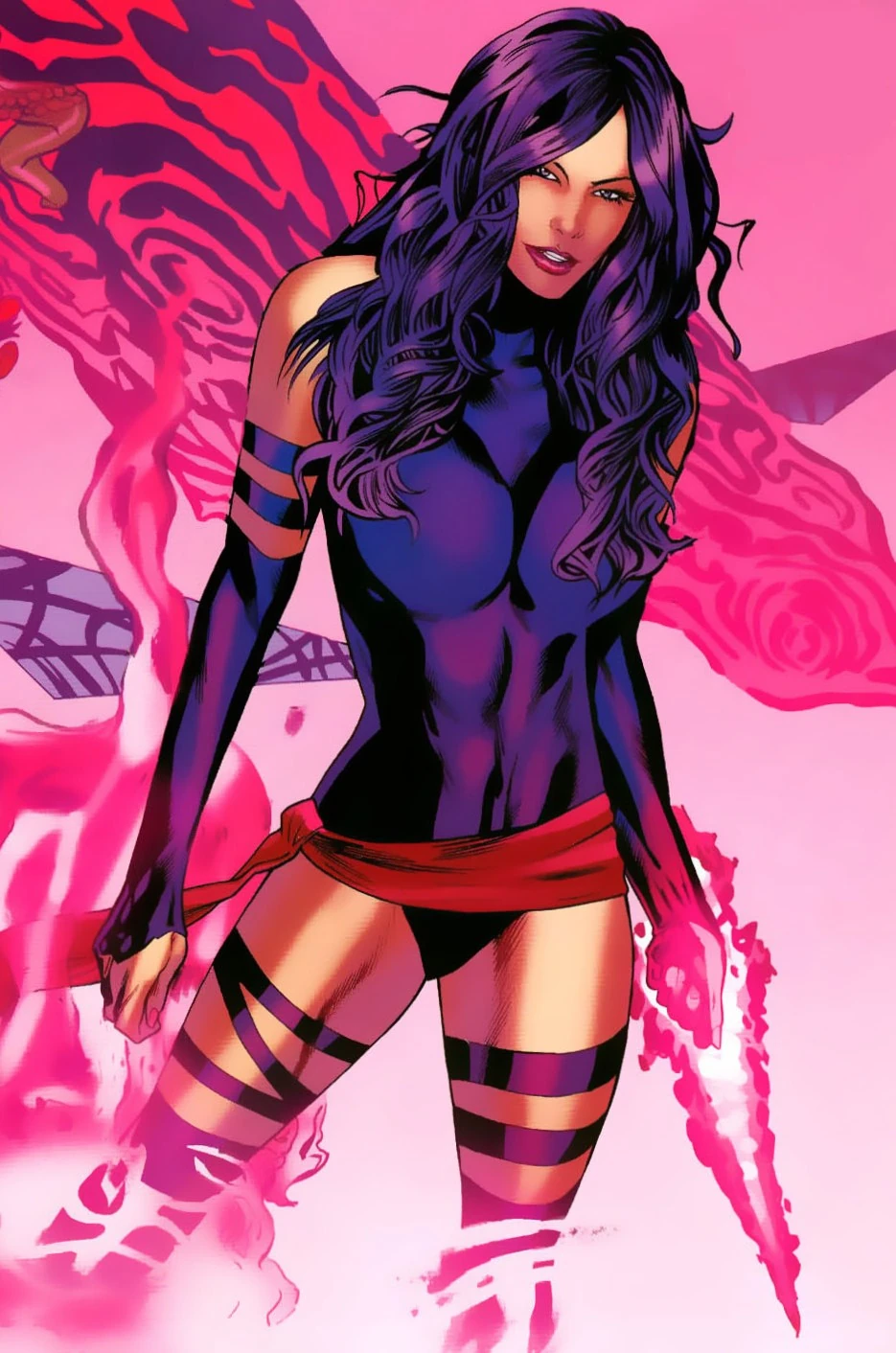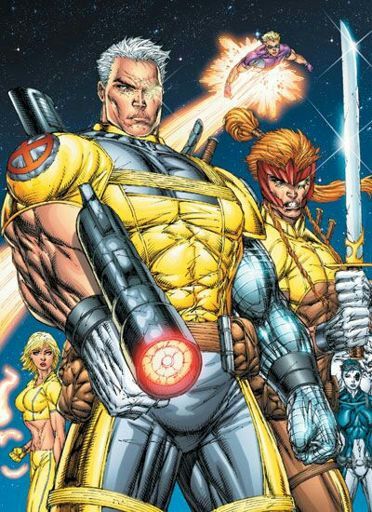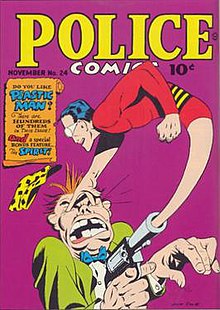In this series, I give you articles that did not make it past Cracked.com‘s editorial review. Cracked is a great website and I respect and understand their editorial decisions, but I’ve spend over 40 hours revising some these, so screw it, I’m writing them. I’m, like…90% sure this isn’t against any of Cracked’s policies, but just in case, let’s not tell them about this (I’d still very much like to be published by them). With that in mind I give you…
5 Comic Book Rip-Offs (with insane backstories)
Comic book creators have been ripping each other off for decades. For every Sub-Mariner there is an Aquaman; for every Flash there is a Quicksilver; for every Human Torch there is a…different, completely unrelated Human Torch. But sometimes the history behind the rip-offs is even more bizarre than their spandex-clad protagonists. Here are 5 of the strangest ones.
One of the Deadpool Creators Admits the Character is a Rip-Off, the Other is Insane

According to writer Fabian Nicieza, when Rob Liefeld first presented him with a sketch of Deadpool, he took one look and told him, “This is Deathstroke from the Teen Titans,” (Classic Marvel Figurine Collection #56). While most people would start over with a new character, Nicieza and Liefeld doubled down on plagiarism, even going so far as to name the character Wade Wilson instead of Slade Wilson.
Later writers would develop Deadpool’s absurdist humor and fourth-wall-breaking asides, which went a long way towards dodging a legal action; instead of being evidence of copyright infringement, Deadpool was a parody character. That’s probably why, instead of suing Marvel, DC just created an “alternate universe” character based on Deadpool and let Deathstroke stab him a bunch.

However, Rob Liefeld’s version of events are a bit…stranger. Just for some background, Liefeld has a long history of attacking his fellow comic creators. He once said Alan Moore, the writer synonymous with artistic integrity, “markets himself as a poet, but he’s just a ruthless businessman, like everybody else,” (Rob Liefeld, ocweekly.com). He also took a private dispute between himself and Batman writer Scott Snyder public…and by that I mean he tweeted screenshots of their conversation like a jilted high school ex:

Even weirder, Liefeld claims that Deadpool has no connection to Deathstroke, despite the similar appearance, identical powers, and the fact that have almost the EXACT SAME FUCKING NAME. He lists many differences between the characters, like “They have different colors” or “one of them is old” in this…bizarre interview with Screenrant.
I mean…he’s screaming so hard he must be telling the truth, right? …Right?
Captain Marvel was called a rip-off, then DC and Marvel ripped him off
So, in 1939, Fawcett comics created Captain Marvel. Much like Superman, he was a super-strong, invulnerable man with the power of flight. However, the big twist with this character was that he was secretly Billy Batson, a 12 year old boy. Batson was given the ability to transform into Captain Marvel by a wizard he met in the subway.
 Image Source: moviepilot.com
Image Source: moviepilot.comDC comics sued Fawcett in 1941, saying that Captian Marvel was copyright infringement. Court proceedings dragged on till 1953 when, tired of litigating and noticing the fading popularity of superheroes, Fawcett settled with DC for $400,000 and agreed to stop publishing the character.
But when superhero comics went through a resurgence in the 1960s, Fawcett realized Captain Marvel was actually worth something. However, since they agreed to never publish Captain Marvel again, all they could do was sell the character. And who stepped in to buy it? DC Comics. That’s right, the company that made Captain Marvel unpublishable in the first place went on to publish him. By claiming he was a rip-off, they managed to rip him off.
But it doesn’t stop there; during the decade or so that Captain Marvel had lain dormant, Marvel Comics ripped the name off:

So DC started calling their comics “Shazam!” They also started selling their toys under the name “Shazam!” Even when Captain Marvel got his own TV show, it had to be called “The Shazam/ISIS Power Hour” which…boy that name didn’t age well.
In 2011, DC finally gave up and just renamed the character “Shazam.” So there you have it. Captain Marvel was accused of being a rip-off, then got ripped off so hard HE LOST HIS GOD DAMN NAME.
Marvel Creators Quit Marvel to Rip Off Everyone Else
In 1992, a group of artists and writers quit Marvel to form Image Comics. The idea was to create a company where they would not only have editorial control of their stories, but also maintain the rights to the characters they created. It seems like an inspiring story, but it’s kinda undercut by the fact that a lot of the characters they created were massive rip-offs of existing characters.
For example, there’s Mighty Man, created by Erik Larsen. He’s an ancient entity, created by a Wizard, that inhabits a person and transform into a god-like being. That should sound familiar because it’s a an exact copy of the character I literally just told you was already ripped off by multiple companies.














In the 90s, Liefeld bought the rights to Fighting American and began his own run on the character. Marvel took notice and quickly sued, but apparently even the company wasn’t sure what the legal status of the character was, because they botched the case. According to Liefeld:
“Their original lawsuit was predicated on accusing me of being the creator of the Fighting American. And when we went to court, and I showed up with the hardcover collections of the Fighting American that Marvel published in 1989 via their own limited licensing agreement with Kirby and Simon, the judge was not too pleased.”
-Rob Leifeld, ocweekly.com
Not only did the lawsuit let Leifeld keep the character, it made him a bigger rip-off:
“Fighting American did not have a shield, prior to my publishing him. Fighting American now has a shield. He walked into the trial being less like Cap and walked out being more.”
-Rob Leifeld, ocweekly.com
Despite Leifeld’s victory, Awesome Comics went out of business after only 3 years. But Image Comics is still around; in fact, it actually wound up being a great place for independent creators (just ask the the guy who created The Walking Dead). So in a way, this story is actually a triumph of artist over corporation…but also of plagiarism over copyright law.
DC ripped off Plastic Man for literally no reason
Chances are, if someone asked you to name a superhero with stretchy powers, you’d say Mr. Fantastic of the Fantastic Four. However, a full two decades before he hit the scene, there was Plastic Man.

Four years later, DC writers John Broome and Carmine Infantino were trying to create a character for their editor, Julius Schwartz. They decided on stretchy hero like Plastic Man, but were having trouble with the name. They can’t call him Rubber Man, cause that name was taken by Flexo the Rubber Man (a flying rubber-robot no one remembers), and Elastic is out, since Jimmy Olsen was already Elastic Lad for a brief stint (long story short, in the 50s they gave Jimmy Olsen super powers ever other day; he was a fucking turtle monster at one point).


Thing is, what none of the writers knew is that they never had to create an imitation. DC had bought Police Comics when they went out of business, so they owned all their old characters, including Plastic Man. Julius Schwartz had his team rip off a character they already owned, and at least one artist fondly remembers mocking Schwartz for this:
“I used to razz Julie…Not knowing that they owned all these old Quality Comics— and Julie’ll deny it, I guess, and say they wanted to do something different — they created Elongated Man instead of Plastic Man. They could have resurrected [Plastic Man] back then right out of their own stable.”
-Murphy Anderson, The Life and Art of Murphy Anderson
Of course, DC wouldn’t let Plastic Man go to waste, and eventually added him into their regular comic book lineup. But they didn’t throw out Elongated Man. So Plastic Man is forced to see his own rip-off on a regular basis. It…it get’s pretty awkward sometimes:

Spider-Man’s Costume is a Cluster-Fuck of Rip Offs
Stan Lee created Spider-Man in 1962, but how much help he had along the way is kind of a grey area. Lee took full credit for the creation for decades, but artist Steve Ditko was rumored to have done most of the design work for him. Stan Lee basically admitted this in 1999, saying Steve Ditko created Spider-Man’s original costume, and even called him Spider-Man’s co-creator. So it’s pretty crappy that it took Lee almost 40 years to admit it, but he did. End of story.
…Except for Jack Kirby.
Kirby is a legendary artist who helped create Captain America, the Fantastic Four, the Hulk, and literally dozens of other iconic characters. There are two major comic book awards named after Jack Kirby. So when Jack Kirby said this in 1990 (4 years before his death), people took notice:
“I created Spider-Man. We decided to give it to Steve Ditko. I drew the first Spider-Man cover. I created the character. I created the costume. I created all those books, but I couldn’t do them all. We decided to give the book to Steve Ditko who was the right man for the job. He did a wonderful job on that.”
-Jack Kirby, The Comics Journal
So Jack Kirby, one of the most respected names in comic books, claimed that both Ditko and Lee were taking credit for his design. That really complicates things…but then again, all of these men were quite old by this time. Maybe none of them really remembered who did what 30 years earlier. Guess we’ll never really know. End of story.
…Except for this:

Cimino uncovered a total of 5 costumes made by Ben Cooper. Two of them were made before the Spider-Man comics (below on the left), while three of them were licensed by Marvel after the comics debuted (on the right).
Cimino never did find out who created the costume, but he did get the name of someone who may have been freelancing for the company at the time: Jack Kirby. Holy shit, how many layers does this mystery have?!?!
Cimino was at a loss, and in a Hail Mary attempt to get some answers, he wrote to Steve Ditko. He never expected receive an answer, since Ditko is kind of a recluse, but he was astonished to get this cryptic, hand written response:
“The burden of proof is on the person who makes the assertion, claim, charge. Some clipping, etc. are not rational proof of anything but some clippings, etc.”
-Steve Ditko, Hero Envy
…What the fuck does that mean? That doesn’t deny anything, but it also doesn’t confirm anything. GOD DAMMIT, WHO MADE SPIDER-MAN’S COSTUME?!?!
Unfortunately, this story doesn’t have a satisfying ending, and neither does this article.
Additional Sources:







